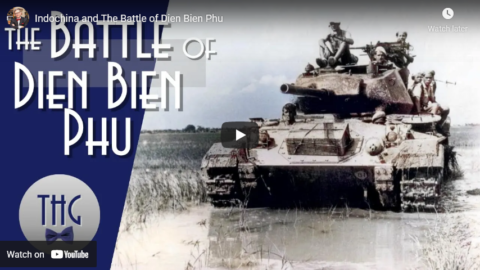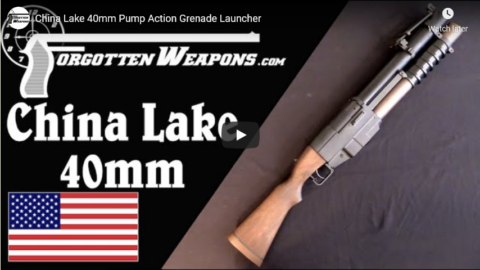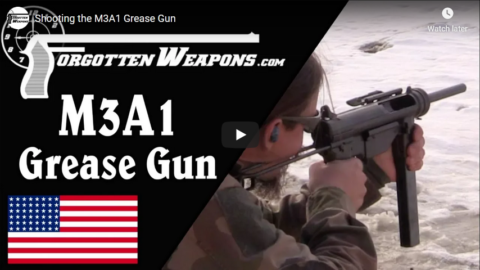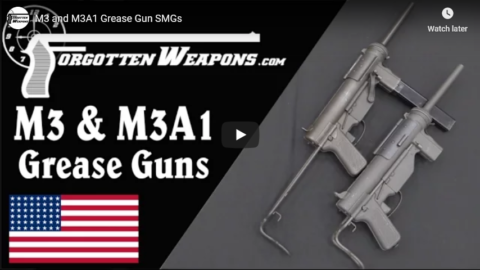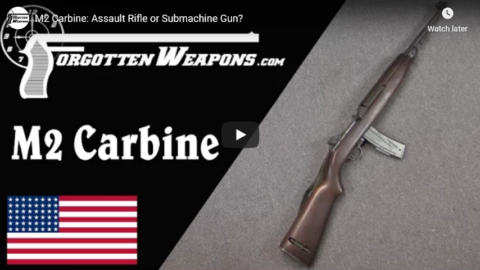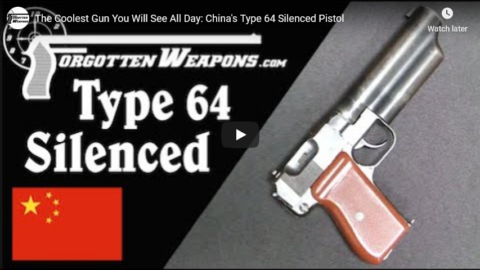World War Two
Published 30 Nov 2021It might only be tangentially relevant to the war as a whole, but the Battle for Reunion Island is not only interesting in and of itself, it serves as a microcosm for the war for the French in general. Check it out!
(more…)
December 1, 2021
The Titanic Struggle for Reunion Island – WW2 Special
November 1, 2021
Indochina and The Battle of Dien Bien Phu
The History Guy: History Deserves to Be Remembered
Published 29 Sep 2017The History Guy remembers how decolonization led to proxy war and the Battle of Dien Bien Phu in what is now known as Vietnam.
The episode discusses and presents historical photographs and film footage depicting events during a period of war, which some viewers may find disturbing. All events are described for educational purposes and are presented in historical context.
The History Guy uses images that are in the Public Domain. As photographs of actual events are often not available, I will sometimes use photographs of similar events or objects for illustration.
Patreon: https://www.patreon.com/TheHistoryGuy
The History Guy: Five Minutes of History is the place to find short snippets of forgotten history from five to fifteen minutes long. If you like history too, this is the channel for you.
Awesome The History Guy merchandise is available at:
https://teespring.com/stores/the-hist…The episode is intended for educational purposes. All events are presented in historical context.
#DienBienPhu #militaryhistory #thehistoryguy
October 13, 2021
QotD: The POW/MIA theories from the post-Vietnam War era
… there are lots of cases where “the narrative” — the method of organizing disparate facts for easy transmission and digestion — becomes The Narrative, all caps, the conspirazoid stuff. Al from da Nort brought up the POW/MIA thing from the Vietnam War, which is a great example. […] back in the 1980s The Narrative (note the capital letters) was that the Vietnamese government was still holding American prisoners of war for some reason.
It routinely showed up on the “news magazine” shows, and of course there were whole series of movies about it: The Missing in Action flicks with Chuck Norris, Rambo II, I’m sure I’m forgetting a few. And though the “firsthand testimony” for this thesis was always of the “somebody knew somebody who heard from somebody that Lt. Smith suddenly disappeared from a POW camp back in 1968,” there was one seemingly strong piece of archival evidence: The seemingly disproportionate number of soldiers and airmen officially listed as “missing in action”.
And yet … c’mon, man, as a guy who dodged that war probably said back when he could still remember what century he’s living in. Why would the Vietnamese do that? All the mooted explanations — slave labor, selling captured pilots to the Russians for training purposes — didn’t pass the smell test. So a historian started digging into it, and while I read MIA: Mythmaking in America 30 years ago in college, I remember the crux of his argument:
In the war’s early days, the military used a statistic called KIA/BNR — killed in action / body not recovered. Everyone knows Lt. Smith is dead, but since his aircraft was vaporized by a SAM over Haiphong, his remains can’t be returned to his people. As Al notes, though, when a pilot was killed in action, his wife and kids got a puny condolence check from the government and kicked out of base housing. Thus the surviving pilots, acting from noble motives, started fudging. “Well … maybe Lt. Smith’s plane wasn’t vaporized. I might’ve seen a chute. It’s all very confusing; remember I was going Mach 1 at the time, dodging flak …” Mrs. Smith and the little Smiths get to keep drawing a paycheck, keep living on base housing, etc. So the official MIA list grew.
Enter Richard Nixon and that sneaky rat fuck Kissinger. Needing a way to prolong the war while concluding “peace with honor” — that is, to weasel out without seeming too weaselly — they needed a sticking point at the treaty table. The MIA issue was perfect for that. What about Lt. Smith? Of course the Vietnamese government can’t account for him; he was blown to atoms over Haiphong; but there’s his name on the missing list. Perhaps he’s in double secret prison!
And thus “the narrative” — the perfectly understandable-in-context lie that changed KIA/BNR to MIA — became “The Narrative”, that the Vietnamese were, for some unfathomable reason, still hanging on to captured American servicemen. Who knows why those inscrutable Orientals do anything, and what kind of America-hating hippie scum are you to ask questions? Don’t you want to bring our boys back home?
Severian, “Kayfabe”, Rotten Chestnuts, 2021-07-04.
July 29, 2021
MAT 49: Iconic SMG of Algeria and Indochina
Forgotten Weapons
Published 16 Jan 2018http://www.patreon.com/ForgottenWeapons
Cool Forgotten Weapons merchandise! http://shop.bbtv.com/collections/forg…
The MAT-49 was developed by France after World War Two to satisfy the need for a more modern submachine gun to replace the MAS-38. The military had come around to standardizing on the 9x19mm cartridge for its pistols and subguns, and the 7.65mm MAS-38 was not feasible to convert. All three state arsenals and the Hotchkiss company submitted designs, and the Tulle arsenal won out with a gun that borrows substantially from the American M3 “Grease Gun”.
About 700,000 MAT-49s were produced between 1949 and 1979, when it (along with the MAS 49/56 rifle) was replaced by the FAMAS bullpup rifle. During that time it saw substantial combat in France’s colonial wars, notable Algeria and Indochina. Despite being a relatively heavy weapon, it came to be well liked by all who used it for its durability and reliability.
Many thanks to the anonymous collector who let me take a look at this piece and bring you a video on it!
If you enjoy Forgotten Weapons, check out its sister channel, InRangeTV! http://www.youtube.com/InRangeTVShow
May 28, 2021
Tank Chats #108 | M48 | The Tank Museum
The Tank Museum
Published 23 Oct 2020Tank Museum Historian David Fletcher discusses the M48 “Patton”, an American first generation Main Battle Tank introduced in 1952. Throughout its service life, the M48 has been very successful and has seen service with many countries including the Americans in Vietnam and the Israel Defense Forces.
Support the work of The Tank Museum on Patreon: ► https://www.patreon.com/tankmuseum
Visit The Tank Museum SHOP & become a Friend: ► tankmuseumshop.orgTwitter: ► https://twitter.com/TankMuseum
Instagram: ► https://www.instagram.com/tankmuseum/
#tankmuseum #tanks
May 15, 2021
QotD: Military history
Things have changed little today in terms of the exclusive Western monopoly of military history. Six billion people on the planet are more likely to read, hear, or see accounts of the Gulf War (1990) from the American and European vantage points than from the Iraqi. The story of the Vietnam War is largely Western; even the sharpest critics of America’s involvement put little credence in the official communiqués and histories that emanate from communist Vietnam. In the so-called Dark Ages of Europe, more independent histories were still published between A.D. 500 and 1000 than during the entire reigns of the Persian or Ottoman Empire. Whether it is history under Xerxes, the sultan, the Koran, or the Politburo at Hanoi, it is not really history — at least in the Western sense of writing what can offend, embarrass and blaspheme.
Victor Davis Hanson, Carnage and Culture: Landmark Battles in the Rise of Western Power, 2001.
March 16, 2021
QotD: Combat accounting
… for the pilots and crew of one such helicopter, the law of averages caught up to them, and the helicopter, being test-flown well out over the ocean, disappeared without a trace. No mayday, no clue, just a helo and several souls gone, amidst a war that was eating both like a ravenous beast.
Enter the flexible and utilitarian morals and institutional larceny that allows the best-run military machines to cope with the insanity of war. Because a squadron, roughly comparable in size to an infantry battalion, is several hundred men, and even at 1960s prices, multiple millions of dollars worth of machines, tools, parts, equipment, and miscellany, from nuts and bolts to aircraft engines, and everything in between. Canteens, machine guns, flak jackets, toilet seats, high explosive ordnance, and everything else you can imagine, and a million things you cannot, in quantities normally only encountered at a Wal-Mart or Target store, or aboard a 100-car freight train.
And not to put the point too finely, 8000 miles away from home, in a war zone where things were destroyed daily by tons of bombs, rockets, mines, shells, bullets, and of course, the finest pilfering skills of one of the most thriving black market economies of all time. Anything not guarded 24/7 would disappear in minutes in Vietnam, up to and including entire aircraft and other major end-user items. (Think things like APCs, tanks, artillery pieces, jeeps, etc.)
And senior NCOs and junior officers are responsible for all that stuff, as well as every commanding officer having to personally sign for and accept responsibility for everything down to the last door knob and belt buckle. Which, amidst such widespread theft and combat destruction, was sheer insanity coupled with practical impossibility.
Until the helicopter went missing.
Because after a dutiful search for survivors yielded nothing whatsoever, a report had to be filed, and items accounted for. Whereupon some shifty but brilliant NCO or senior NCO pointed out to a junior officer that it would be rather convenient to cover for all the tons of things blown up, stolen, lost, pilfered, etc., to just include them on the manifest and equipment carried on that now gone-forever helicopter.
And so, in rapid order, every crew chief, maintenance shop, and officer from warrant to XO certified, in detail, the manifest of tools, spare parts, and military miscellany that had been aboard the doomed flight, and the CO signed off on it, immediately bringing the reality of property on hand into line with what was actually able to be found, touched, and wielded by that squadron.
This boon to military accounting had, of course, the obvious flaw.
Someone higher up in the hierarchy, presented with the dozens of pages of missing gear on the missing aircraft, did some napkin math, and observed deftly that the weight of the missing items would be roughly twenty times the maximum lifting capacity of the helicopter in question, and the only way a craft actually so burdened could have achieved aerial flight was if someone had detonated an explosive device under the skids in the mid-teen kiloton range. Otherwise, it would have been like trying to get an elephant off the ground using a pair of hummingbird wings.
But the military being the military, no one wanted to rock the boat, and so the obviously fraudulent work of fiction was funneled right back to the gaping maw of Pentagon reports, where it disappeared like the Ark of the Covenant at the end of Raiders Of The Lost Ark, and the cosmic scales were in balance.
Raconteur, “Squadron Property and Cultural Rubicons”, Raconteur Report, 2018-09-27.
March 14, 2021
China Lake 40mm Pump Action Grenade Launcher
Forgotten Weapons
Published 11 Dec 2020http://www.patreon.com/ForgottenWeapons
https://www.floatplane.com/channel/Fo…
Cool Forgotten Weapons merch! http://shop.bbtv.com/collections/forg…
Possibly the coolest small arm used by the United States in the Vietnam War was the China Lake 40mm pump action grenade launcher. Only 24 of these were made, each fitted by hand. Of those, 2 went to MACVSOG, 2 to Army Force Recon, and the remaining 20 the the Navy SEALS. They were used as an ambush initiation weapon, with 4 rounds of rapid-fire 40mm HE grenades available.
Only five original examples survive today; four in US museums and military institutions and one in a museum in Saigon. An effort was made in 2004 to build reproductions, it is one of those used in this video. This project was not ultimately successful, but did lead to a very interesting series of events with the Airtronic company and the US Marine Corps, which will be detailed in a following video. Special thanks to Dutch Hillenburg and Kevin Dockery for making this video possible!
Contact:
Forgotten Weapons
6281 N. Oracle #36270
Tucson, AZ 85740
March 8, 2021
M79: The Iconic “Bloop Tube” 40mm Grenade Launcher
Forgotten Weapons
Published 4 Dec 2020http://www.patreon.com/ForgottenWeapons
https://www.floatplane.com/channel/Fo…
Cool Forgotten Weapons merch! http://shop.bbtv.com/collections/forg…
Combat experience with the bazooka rocket launcher in World War Two and its larger versions in the Korean War convinced the US military that a better weapon was needed to give front-line troops a direct-fire way to attack enemy strong points. The bazooka was bulky, not particularly accurate, and created a lot of backblast signature when fired. This led to a multi-part development effort involving design of a small grenade body, reliable but cheap fusing system, and a cartridge design that could launch it.
The result was the 40x46mm grenade. It uses a “high-low” system (originally developed by Rheinmetall during World War Two) in which a powder charge is fired in a small compartment within the cartridge case. The initial pressure in this compartment is some 35,000 psi, which is plenty high to ensure complete and repeatable powder burn. At peak pressure, the internal compartment ruptures, allowing the propellant gasses to expand into the full case volume, which lowers the pressure to about 3,000 psi. This lower pressure is safe to use with an aluminum barrel, and propels the grenade at about 250 fps, giving it a range of about 400 yards without generating excessive recoil.
The M79 proved to be very accurate and reliable. Its downside was the need for the grenadier to carry a backup sidearm, as the M79 could not be used at close range. Almost as soon as it was introduced, work began on developing a launcher which could be attached to the M16 service rifle. This would first be the XM-148, and then ultimately the M203 that would replace the M79 in service. M79 launchers can still be found all over the world, however, as they are robust and reliable.
Contact:
Forgotten Weapons
6281 N. Oracle #36270
Tucson, AZ 85740
February 28, 2021
Cultural appropriation foods around the world
J.J. McCullough
Published 14 Dec 2019Baguettes in Vietnam! Curry in Japan! Tea in India! Let’s look at the practice of eating food from other countries, which is more widespread than you might think, thanks to imperialism and immigration.
FOLLOW ME:
Support me on Patreon! https://www.patreon.com/jjmccullough
Join my Discord! https://discord.gg/3X64ww7
Follow me on Instagram! https://www.instagram.com/jjmccullough/
Read my latest Washington Post columns: https://www.washingtonpost.com/people…
Visit my Canada Website http://thecanadaguide.com
HASHTAGS:
#food #curry #empire
January 22, 2021
Shooting the M3A1 Grease Gun
Forgotten Weapons
Published 9 Mar 2018The M3 (and its followup improved M3A1 model) was the United States’ answer to the high cost and manufacturing complexity of the Thompson submachine gun. The M3 “Grease Gun” (because really, that is what it looks like) was a very inexpensive weapon with a stamped and welded receiver and only a few milled parts. It also had the slowest rate of fire of any World War 2 submachine gun at about 450 rounds/minute. Its weight, compactness, and controllability made it almost universally preferred over the Thompson, at least by soldiers who had to carry and fight with either of them.
The Grease Gun is reputedly extremely controllable because of its low rate of fire, but this is my first time to actually try shooting one. Will it live up to that reputation?
http://www.patreon.com/ForgottenWeapons
Cool Forgotten Weapons merch! http://shop.bbtv.com/collections/forg…
If you enjoy Forgotten Weapons, check out its sister channel, InRangeTV! http://www.youtube.com/InRangeTVShow
Contact:
Forgotten Weapons
6281 N Oracle #36270
Tucson, AZ 85704
January 19, 2021
M3 and M3A1 Grease Gun SMGs
Forgotten Weapons
Published 14 Apr 2017The US began looking for a cost-effective replacement for the Thompson submachine gun in 1942, and the “Grease Gun” was the result. Designed by George Hyde (a noted firearms designer at the time) and Frederick Sampson (GM/Inland chief engineer), it was a very simple and almost entirely stamped firearm. Chambered for the .45ACP cartridge, it is notable for its very low rate of fire — 350-400 rpm, which made it quite controllable and easy to shoot for relatively inexperienced troops.
The M3 was a quite reliable gun (and what problems it did have were mostly due to its single-feed magazine and not the gun itself), but a revision program was begun in April 1944. This would produce the M3A1, which further simplified the design by removing the charging handle (which had been the one mechanical trouble point of the M3 anyway) and replacing it simply with a notch in the bolt to cock the gun with a finger.
While the M3 and M3A1 were replaced in front-line service in 1957, they would remain in military inventory as armament for tank crews and truck drivers until 1992 — quite the legacy for such a crude looking weapon!
http://www.patreon.com/ForgottenWeapons
Cool Forgotten Weapons merch! http://shop.bbtv.com/collections/forg…
If you enjoy Forgotten Weapons, check out its sister channel, InRangeTV! http://www.youtube.com/InRangeTVShow
January 16, 2021
M2 Carbine: Assault Rifle or Submachine Gun?
Forgotten Weapons
Published 23 Mar 2017The M2 Carbine was a mechanically simple modification of the M1 Carbine to allow fully automatic fire. The fire prototypes of the M1 Carbine had actually been selective-fire guns, but that requirement had been dropped by the time the Winchester design was officially adopted as the M1. It was a feature quickly requested by troops once the Carbine entered active service, though.
In 1944 the US Army acknowledged this, and introduced the M2. A total of 217,000 were manufactured at the end of WW2, and did see limited service on Okinawa — and then extensive use in the Korean War and Vietnam War.
The M1 Carbine has long generated controversy among those attempting to rigidly define its role, as it falls awkwardly between the notion of submachine gun and assault rifle, firing a cartridge that is clearly more powerful than a pistol round but equally clearly less powerful than an intermediate rifle round. Its originally intended role was as a personal defense weapon more effective than the 1911 pistol, and in service it always scored high marks for handiness and poor marks for combat effectiveness. The opinion of soldiers using the Carbine in either its M1 or M2 form was very much dependent on what role they expected it to serve.
In my opinion, its light weight and stock design make it a sub-optimal submachine gun, and its light cartridge makes it a sub-optimal assault rifle. But if you need a light and handy carbine to carry a lot and only use in emergencies, it is hard to beat for its time.
http://www.patreon.com/ForgottenWeapons
Cool Forgotten Weapons merch! http://shop.bbtv.com/collections/forg…
If you enjoy Forgotten Weapons, check out its sister channel, InRangeTV! http://www.youtube.com/InRangeTVShow
December 9, 2020
Historical Models Summarized: The Military Expedition
Overly Sarcastic Productions
Published 18 Feb 2016Today, Blue discusses recurring themes in history! This one’s the Military Expedition, aka what happens when a powerful military juggernaut gets too big for its britches and starts saying stuff like “too big to fail” unironically.
Blue: If you’re curious about the weird chart/graph thing blue showed during the Napoleon segment, look up Charles Joseph Minard [mentioned here and here], the guy who made it. It’s a really cool chart that shows the size of the army as it traveled across Russia (tan) and back (black). You can see how perilous the journey was based on how narrow the line gets. Graphs are cool.
November 25, 2020
The Coolest Gun You Will See All Day: China’s Type 64 Silenced Pistol
Forgotten Weapons
Published 14 Aug 2020http://www.patreon.com/ForgottenWeapons
https://www.floatplane.com/channel/Fo…
Cool Forgotten Weapons merch! http://shop.bbtv.com/collections/forg…
The Type 64 is a dedicated suppressed pistol first introduced in 1965 and used in the Vietnam War. It uses a rimless version of the .32 ACP cartridge (7.65x17mm) in a 9-round Makarov-like magazine. Despite outward similarity to the Makarov (especially the grip), the design is wholly unique internally. It uses basically a miniaturized AK bolt to allow the shooter to select between blowback semiauto functioning and single shot manual operation. The bolt’s rotating locking lugs prevent it from cycling when locked, in a very clever alternative use of the rotating bolt system. The suppressor has two chambers, using a combination of baffles and wire mesh as suppressor elements. In addition to standard ammunition, a plastic-sabot frangible load was also developed for use in situations like airline hijackings, and this loading is why some sources reference a maximum effective range of 15 meters.
For all its technical cleverness, the Type 64 is a rather heavy pistol, at 1.8kg / 4 pounds. It was replaced in 1967 by the substantially lighter and simpler Type 67, which weighed only 1.05kg / 2.3 pounds. This particular Type 64 was originally owned by Mitch Werbell III, giving it an even more interesting history …
Contact:
Forgotten Weapons
6281 N. Oracle #36270
Tucson, AZ 85740

